Data Brief 2022-006 | June 17, 2022 | Written and compiled by Leila Gonzales and Christopher Keane, AGI
Download Data Brief
Responding to the Pandemic through Flexible Working Arrangements
Throughout the pandemic, work environments have shifted between virtual,
in-person and hybrid scenarios. Remote-first work policies, which allow
employees to choose their work location for any given day, have enabled
workplaces to more quickly adapt to changing pandemic conditions.
Furthermore, while remote-first policies have been more common for
non-academic professionals than for college and university faculty,
during the Delta and Omicron surges in late 2021 and early 2022, an
increasing percentage of academic faculty and non-academic professionals
reported that their employer’s had remote-first workplace policies in
effect.
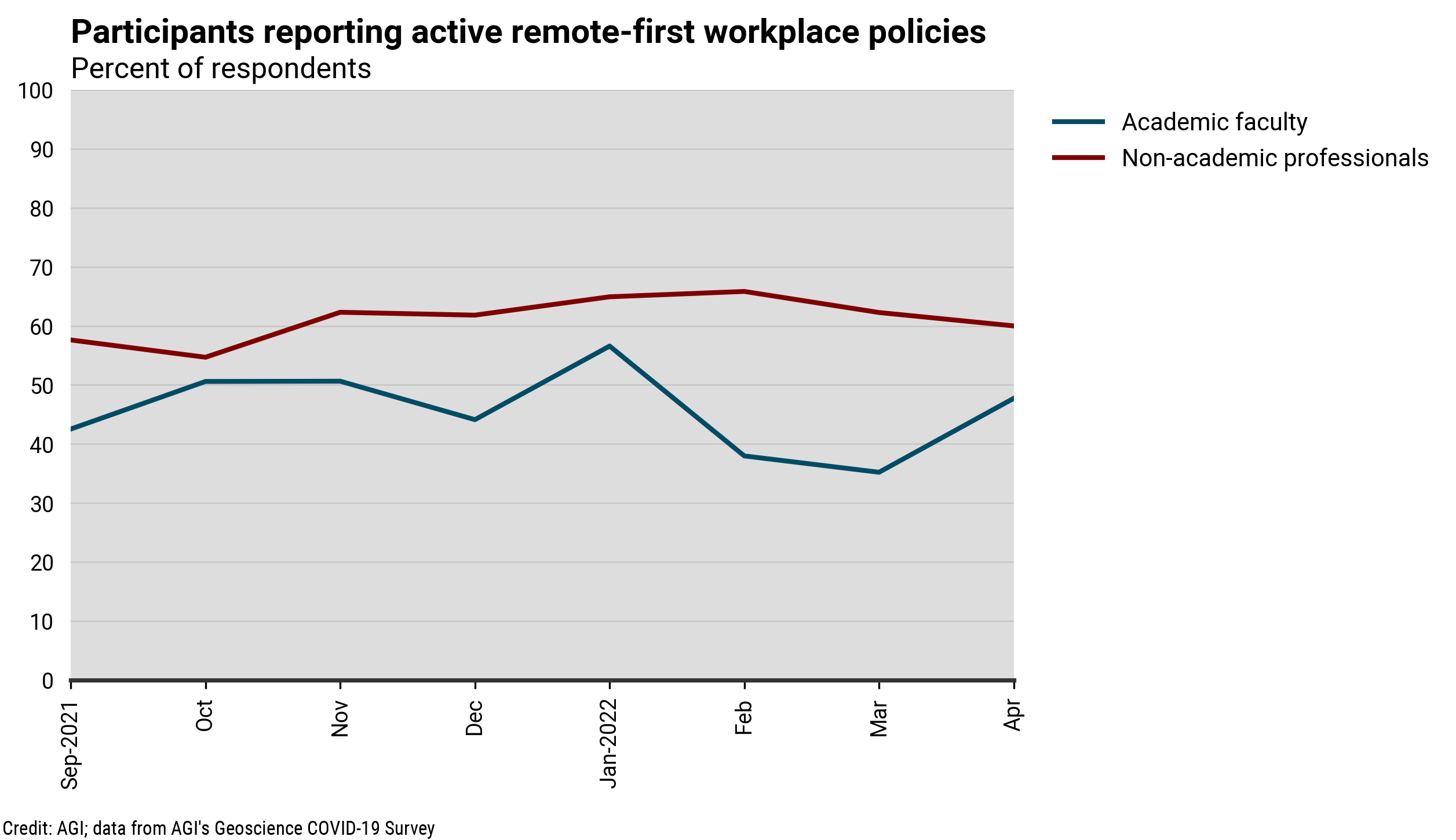
DB_2022-006 chart 01: Participants reporting active remote-first workplace policies (Credit: AGI; data from AGI's Geoscience COVID-19 Survey)
AGI
Over the course of the pandemic, an increasing percentage of academic
faculty worked on campus or in the office. With the re-opening of
campuses in early 2021, the percentage of faculty working in the office
increased substantially, and by Fall 2021 more faculty reported working
in the office than working remotely as campuses re-opened for in-person
instruction. Remote work, however, remains a major, if not full-time,
work environment for academic faculty alongside in-person instructional
and on-campus activities.
Starting in September 2021, over half of academic faculty reported
working more than half-time or full-time on campus while just over
one-third of faculty reported working half-time or less on campus. These
percentages have remained relatively steady since Fall 2021, albeit an
uptick in more time spent off-campus in January 2022 during winter break
which also coincided with the Omicron surge.
Academic faculty transitioned away from remote work as a primary work
environment starting in Fall 2021, with only 41% of faculty reporting
working remotely more than half-time or full time in August 2021. By
April 2022, 71% of faculty reported working remotely half-time or less
and only 13% reported working remotely more than half-time or full-time.
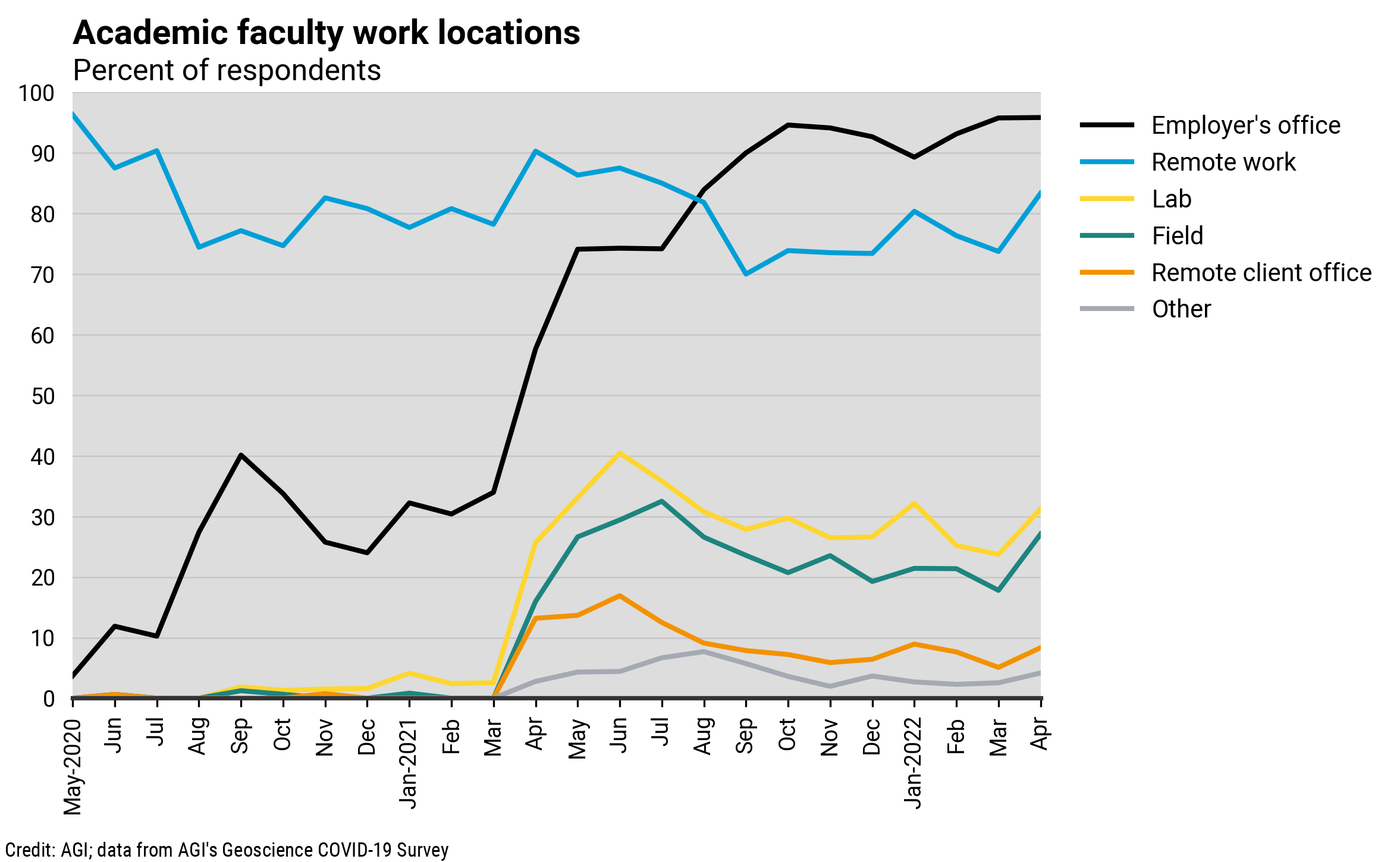
DB_2022-006 chart 02: Academic faculty work locations (Credit: AGI; data from AGI's Geoscience COVID-19 Survey)
AGI
Note: Lines do not sum to 100%. Respondents were able to choose multiple work locations for any given month.

DB_2022-006 chart 03: Academic faculty: time spent at employer's office (Credit: AGI; data from AGI's Geoscience COVID-19 Survey)
AGI
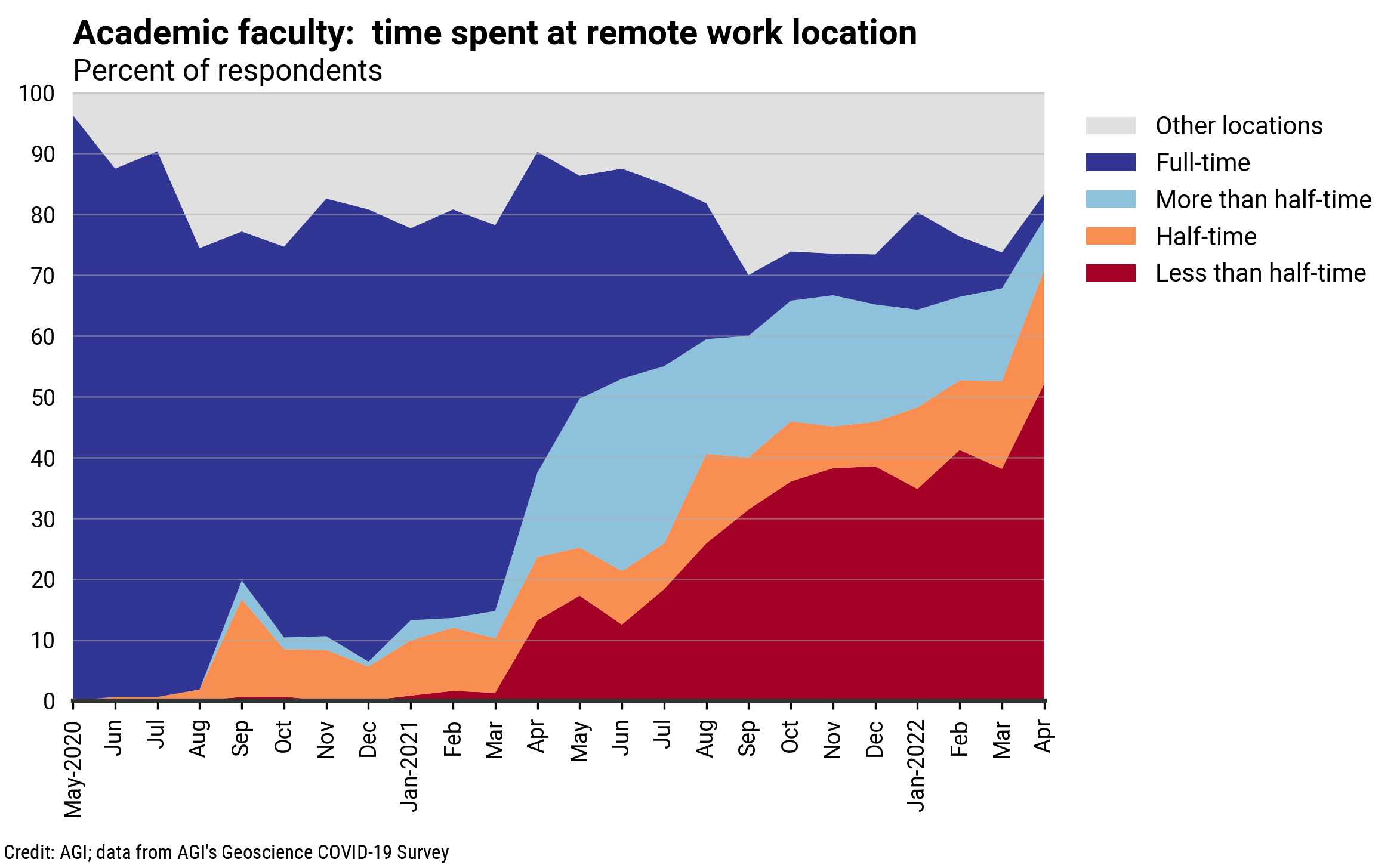
DB_2022-006 chart 04: Academic faculty: time spent at remote work location (Credit: AGI; data from AGI's Geoscience COVID-19 Survey)
AGI
Non-academic professionals reported a return to in-office work shortly
after the vaccine roll-out in early 2021, Starting in April 2021, over
half of non-academic professionals reporting that they were working in
the office, and this percentage continued to increase to almost 80% by
October 2021, thereafter plateauing. Meanwhile, remote work has remained
a prominent work option with 74% to 84% of non-academic professionals
working from home to some level since June 2020.
Since May 2021 nearly 40% of non-academic professionals have reported
working in the office half time or less, and this percentage has
remained relatively steady since. By July 2021, just over one-third of
non-academic professionals reported working more than half-time or
full-time in the office, and this also has remained relatively steady
since then with some minor fluctuations.
Remote work has remained a key work environment for non-academic
professionals since May 2020, although as offices opened up in 2021, the
percentage of non-academic professionals working remotely more than
half-time or full time declined to approximately 50% by August 2021 and
has remained relatively steady since then.
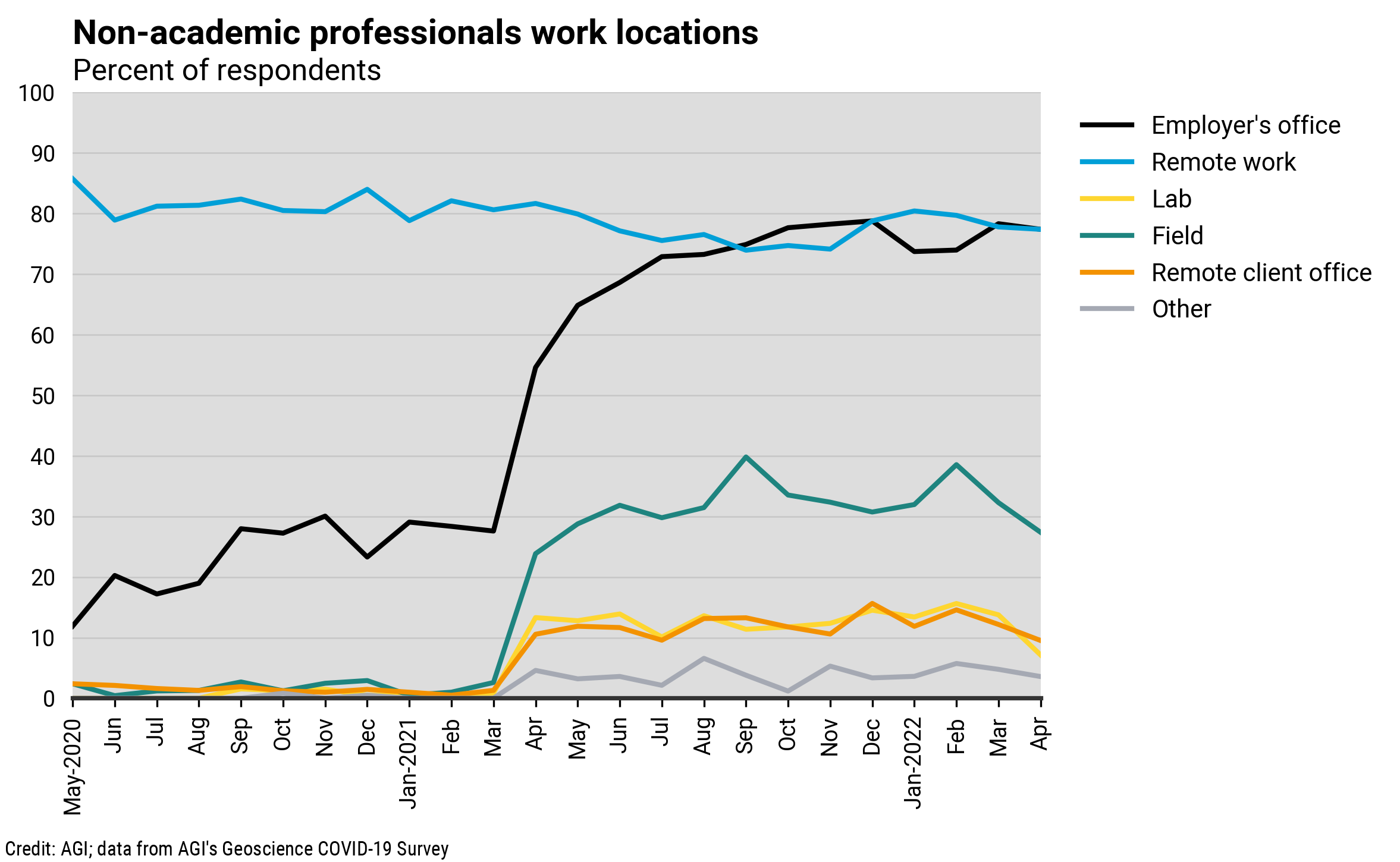
DB_2022-006 chart 05: Non-academic professionals work locations (Credit: AGI; data from AGI's Geoscience COVID-19 Survey)
AGI
Note: Lines do not sum to 100%. Respondents were able to choose multiple work locations for any given month.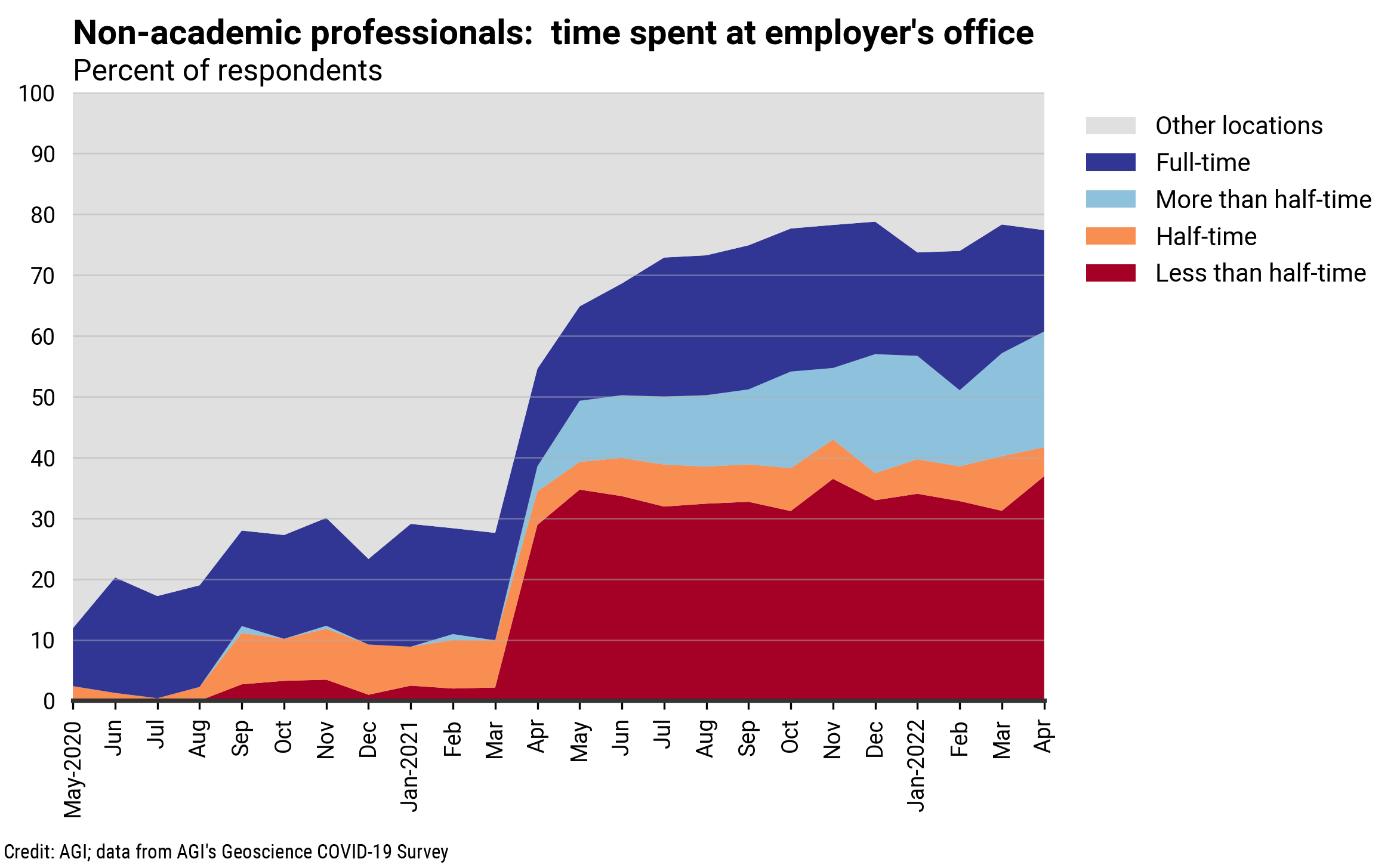
DB_2022-006 chart 06: Non-academic professionals: time spent at employer's office (Credit: AGI; data from AGI's Geoscience COVID-19 Survey)
AGI
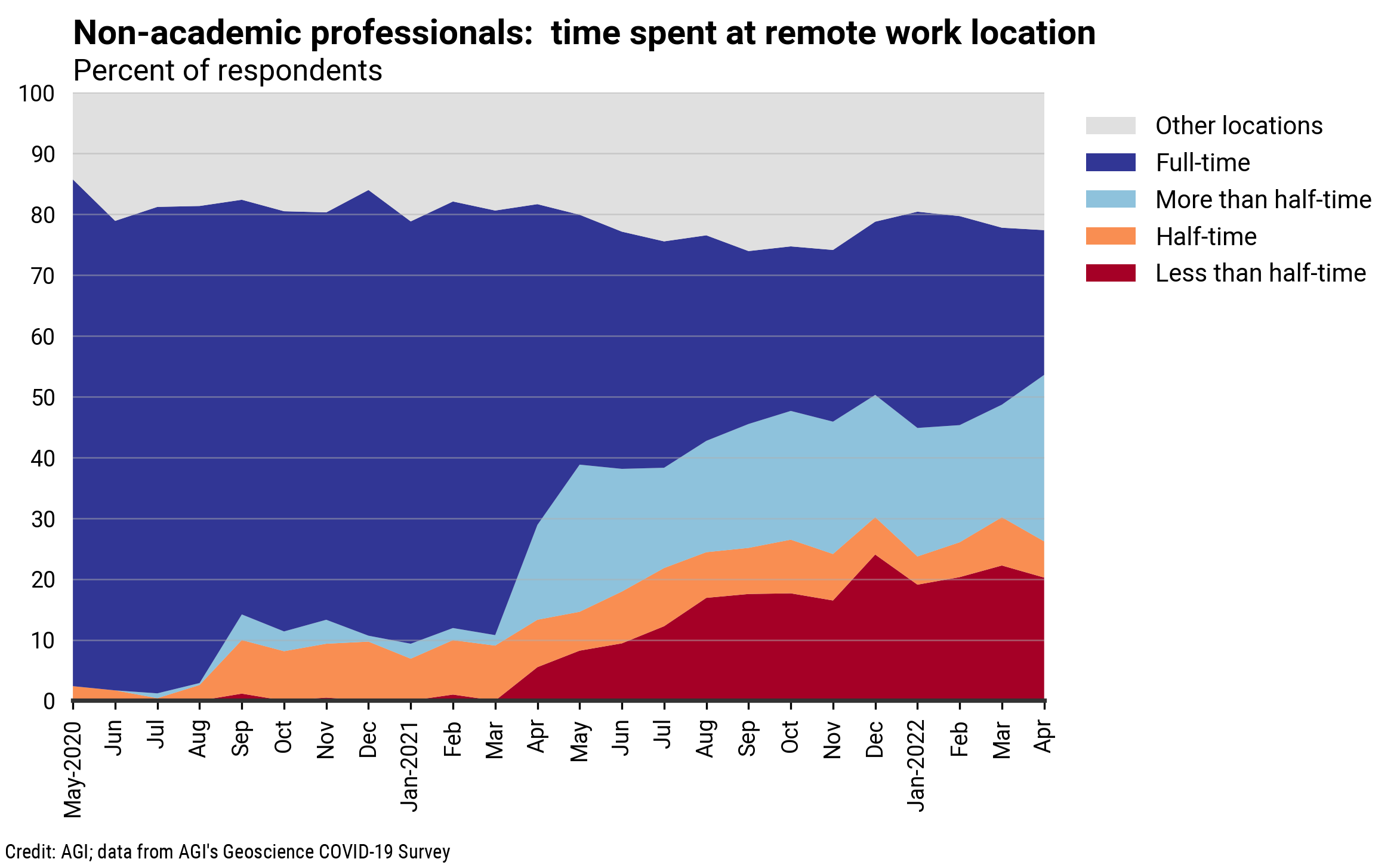
DB_2022-006 chart 07: Non-academic professionals: time spent at remote work location (Credit: AGI; data from AGI's Geoscience COVID-19 Survey)
AGI
We will continue to provide current snapshots on the impacts of COVID-19
on the geoscience enterprise throughout the year. For more information,
and to participate in the study, please visit:
www.americangeosciences.org/workforce/covid19
Funding for this project is provided by the National Science Foundation
(Award #2029570). The results and interpretation of the survey are the
views of the American Geosciences Institute and not those of the
National Science Foundation.